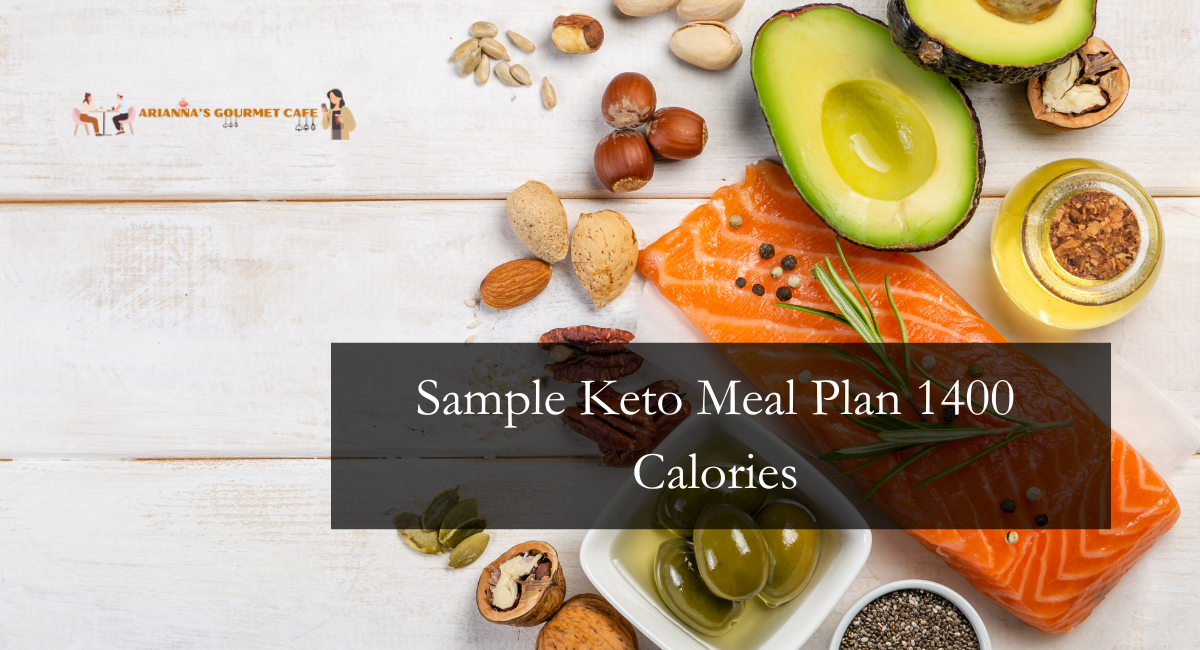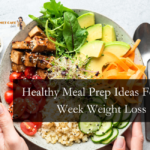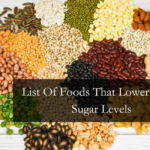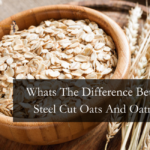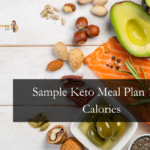A 1400-calorie keto meal plan is a well-thought-out way to eat that limits carbs while putting the focus on healthy fats and enough protein. This low-carb, high-fat diet is meant to put the body into ketosis, a metabolic state in which fat is burned as fuel. This article, will explain sample keto meal plan 1400 calories.
Sample Keto Meal Plan 1400 Calories
Day 1
Breakfast
- Eggs scrambled with spinach and mushrooms sautéed in coconut oil: Add grated cheddar cheese for flavor enhancement.
- A complement of avocado slices: Add salt, pepper, and fresh lemon juice before serving.
Lunch
- Chicken breast grilled with Caesar salad: Using olive oil, anchovies, garlic, and parmesan cheese, prepare a keto-friendly Caesar vinaigrette. Combine with romaine lettuce and parmesan cheese.
Snack
- An assortment of macadamia nuts: Macadamia nuts are keto-friendly because they are rich in fat and low in carbohydrates.
Dinner
- Salmon baked in the oven with lemon and herbs: Use olive oil, lemon juice, and fresh herbs like cilantro and parsley to rub the salmon.
- Broccoli roasted in olive oil and garlic: Roasting broccoli enhances its flavor.
Day 2
Breakfast
- Greek yogurt with assorted berries and honey (or another keto-friendly sweetener) Drizzle: Choose full-fat Greek yogurt to maintain the ketogenic nature of the meal.
Lunch
- Wraps of turkey and avocado with lettuce and cherry tomatoes on the side: You can add mayonnaise or mustard to enhance the flavor.
Snack
- Celery stalks with cream cheese: Cream cheese is rich in fat and adds creaminess to the snack.
Dinner
- Stir-fried beef with broccoli, red bell peppers, and a soy-garlic sauce: Low-carb alternatives to soy sauce include tamari and coconut aminos.
Day 3
Breakfast
- Low-carb protein powder blended with unsweetened almond milk, spinach, MCT oil, and spinach: Add your preferred keto-compatible protein powder.
Lunch
- Egg salad with a vinaigrette dressing and assorted greens: Utilize a straightforward vinaigrette prepared with olive oil, vinegar, and your preferred seasonings.
Snack
- Cucumber slices with guacamole: Guacamole provides flavor and healthful fats.
Dinner
- Grilled shrimp skewers served with olive oil-dressed asparagus spears: For added flavor, sprinkle smoked paprika over prawns before grilling.
Day 4
Breakfast
- Omelet containing ham, capsicum, and cheddar cheese: Include your beloved keto-friendly ingredients.
Lunch
- On a bed of mixed greenery is served tuna salad: Add olives or capers for additional flavor.
Snack
- An abundance of almonds: Almonds are a nutritious source of fat.
Dinner
- Chicken thighs in a baked lemon-butter sauce: For added flavor, add minced garlic and fresh herbs to the butter.
- Steamed green beans sprinkled with almond slivers: Almonds lend a pleasant crunch.
Day 5
Breakfast
- Chia seed pudding prepared with almond milk, garnished with strawberry slices and pecan pieces: Chia seeds give the pudding fiber and texture.
Lunch
- Steak grilled with garlic butter-sautéed asparagus as a side dish: Cook the spinach in butter until it wilts, then season with minced garlic.
Snack
- Cherry tomatoes and mozzarella cheese: A classic and delicious refreshment pairing.
Dinner
- Cod baked with a garlicky herb-cream sauce: For the sauce, combine heavy cream, minced garlic, and fresh herbs such as thyme and rosemary.
- Brussels sprouts roasted with bacon: Crispy Brussels sprouts are achieved by roasting them.
Day 6
Breakfast
- Roll-ups of smoked salmon and cream cheese with cucumber slices: Smoked salmon and cream cheese are rolled and sliced into bite-sized portions.
Lunch
- Chicken Caesar salad: Use leftover grilled chicken from Day 1 and a keto-friendly Caesar dressing to create a chicken Caesar salad.
Snack
- Pork skins with homemade ranch dipping sauce: Combine sour cream, mayonnaise, and herbs to create a ranch dipping sauce.
Dinner
- Pork chops with a mustard cream sauce: Cook the pork chops until golden brown, and then prepare a sauce with Dijon mustard, heavy cream, and chicken broth.
- Sautéed zucchini vermicelli with garlic and olive oil: Spiralize zucchini and sauté it with minced garlic in olive oil.
Day 7
Breakfast
To make eggs stuffed with avocado and bacon: Scoop some avocado flesh, encase it in bacon, and bake until crispy. With scrambled eggs, serve.
Lunch
A chicken breast stuffed with spinach and feta cheese and served with a variety of veggies: Cut a hole in the chicken breast and stuff it with spinach and feta before baking.
Snack
- A tiny portion of strawberries or raspberries: Berries contain fewer carbohydrates than other fruits.
Dinner
- Salmon grilled with a pesto sauce: Grill salmon until it flakes readily and serve with a pesto sauce that is friendly to the keto plombier.
- Roasting cauliflower with olive oil and Parmesan cheese: accentuates the vegetable’s inherent sweetness.
Tips
Before beginning a keto diet, take the time to familiarize yourself with its principles and guidelines. Learn which foods contain fewer carbohydrates and more healthful fats.
- Meal Planning: Plan ahead for your meals. Creating a weekly meal plan helps you remain on track and ensures that you always have the necessary ingredients.
- Track Your Macros: Maintain a record of your macronutrients (carbohydrates, lipids, and protein). Numerous applications and websites can assist you in calculating and monitoring your macros.
- Stay Hydrated: Consume an abundance of water. Keto diets can result in increased water loss, so it is crucial to remain hydrated.
- Include Healthy Fats: Opt for healthy fats such as avocados, almonds, seeds, olive oil, and fatty fish such as salmon. These lipids provide vital nutrients and keep you feeling full.
- Beware of Hidden Carbohydrates: Some foods contain hidden carbohydrates that can rapidly add up. Carefully read food labels and be aware of carbohydrate sources such as sauces, condiments, and processed foods.
- Include Non-Starchy Vegetables: Spinach, kale, broccoli, and cauliflower are non-starchy vegetables that are low in carbohydrates and provide essential vitamins and fiber.
- Electrolytes: Keto diets can occasionally result in an electrolyte imbalance. To prevent this, consider consuming potassium-, magnesium-, and sodium-rich foods or, if necessary, taking dietary supplements.
- Practice Portion Control: Even on a ketogenic diet, portion control is essential for managing calorie consumption. Because healthy fats are high in calories, it is simple to consume too much.
- Monitor Your Progress: Assess your progress frequently. This includes keeping note of your weight, body measurements, and feelings. Adjust your diet and level of activity as necessary.
Benefits
- Weight Loss: Keto diets are frequently effective for weight loss due to their capacity to suppress appetite and promote fat metabolism. When carbohydrates are limited, the body uses stored fat for energy.
- Improved Blood Sugar Control: Ketogenic diets can help control blood sugar levels by limiting the amount of carbs you eat. This could help people with type 2 diabetes or people who are at risk of getting the disease.
- Enhanced Mental Clarity: Some individuals on the ketogenic diet report enhanced concentration, mental acuity, and cognitive function. This may result from stable blood sugar levels and brain ketone utilization.
- Increased Energy Levels: As the body gets used to using ketones as fuel, many people feel more energetic, especially when they are fasting or working out.
- Reduced Triglycerides: Triglycerides are a type of blood fat associated with heart disease. Keto diets frequently contribute to a reduction in triglyceride levels.
- Increased HDL Cholesterol: While ketogenic diets may increase LDL cholesterol levels in some individuals, they frequently raise HDL (“good”) cholesterol, associated with a reduced risk of cardiovascular disease.
- Appetite Suppression: Ketosis can reduce appetite and cravings for high-carb, unhealthy foods, making it more straightforward for some individuals to maintain a calorie deficit.
- Improved Skin Health: While on a ketogenic diet, some individuals have reported clearer skin and reduced acne.
- Improved Blood Pressure: Ketogenic diets may aid in lowering blood pressure, a critical factor in reducing the risk of cardiac disease.
- Epilepsy Treatment: For decades, the ketogenic diet has been a therapeutic method for treating drug-resistant epilepsy in some patients, particularly children.
Thanks for reading.
